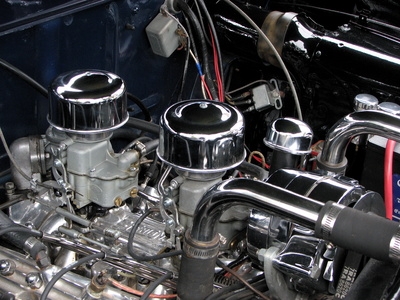
Rebuilding a car engine is no easy task. However, it is a great way to learn a great deal about cars and potentially restore an old car to working condition. But not every engine can be rebuilt. If the engine is beyond repair, you may find it cheaper to simply replace the engine. However, rebuilding an engine is not impossible. All you need is perseverance and time. In the end, rebuilding the engine yourself can often result in a better rebuild than if you had paid someone to do it, since you will be able to provide attention to every detail.
Decide if the engine is worth rebuilding or is even capable of being rebuilt. Newer car engines have various timings and mechanisms controlled by computer systems that are not easily accessed by hobbyists, while an older engine could be damaged beyond economical repair. If you are rebuilding the engine as an educational exercise then cost may not be important. Even a broken engine can teach you a lot about car repair.
Buy any additional tools you need. You will need a full set of auto repair tools, including socket wrenches, a torque wrench and specialized tools like ring expanders. You will also need an engine crane to remove the engine from the car body. Car engines are extremely heavy and can be dangerous if lifted improperly.
Take apart the engine. Begin with any valves, gaskets or obvious screws that can be dismantled. Document your progress with photographs and careful notes. Take your pictures from multiple angles. Put bolts and small parts into bags with appropriate labels. Good pictures and notes will help during reassembly, because it can be very difficult to remember exactly how every part fits into the engine.
Clean old parts that can be reused and make necessary repairs. Cleaning will reveal the true condition of the engine and indicate what parts may need replaced. Inspect the parts after cleaning for any obvious damage.
Take your engine to a machine shop to be tested for strength. The most important tests made by a machine shop are magnafluxing and sonic testing. Both will reveal cracks in the engine block and tell you if the engine is even worth using anymore. The machine shop can also perform high-precision measurements for roundness on the cylinders and other key parts, which can keep your engine running longer.
Buy any replacement parts. If you are unsure of what parts you need to order, take the worn-out pieces to an automotive shop, where experts can help you.
Reassemble the engine using the documentation you created in Step 3. Make sure all parts are clean and properly oiled before installing. You may need to rent special tools like a torque wrench or a ring compressor if you do not have access to them. Use manufacturer guides if they are available, and do not be afraid to contact an expert. Putting an engine together incorrectly could result in catastrophic failure, so careful planning is required.